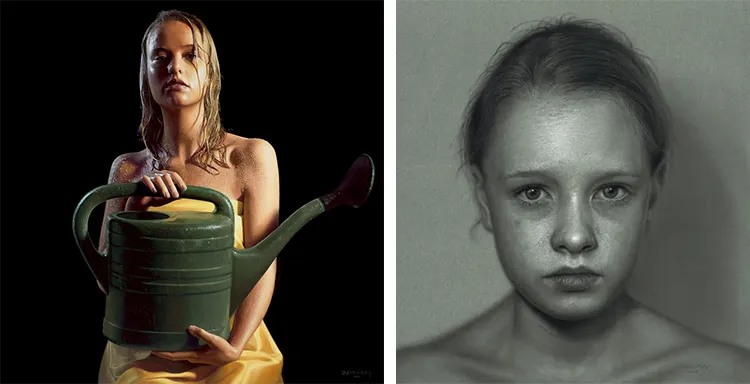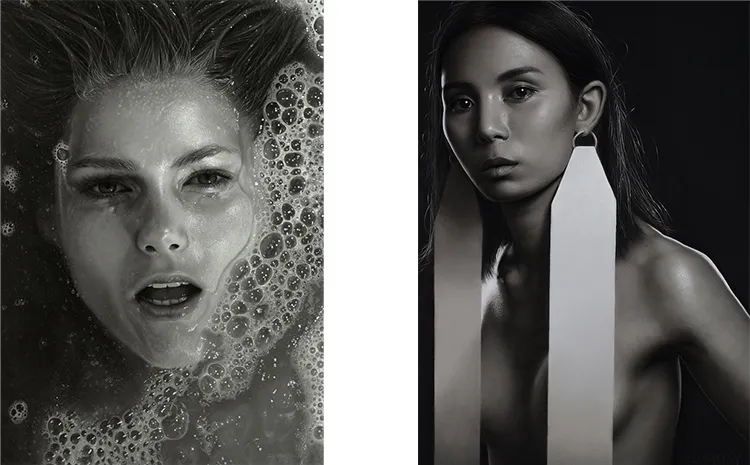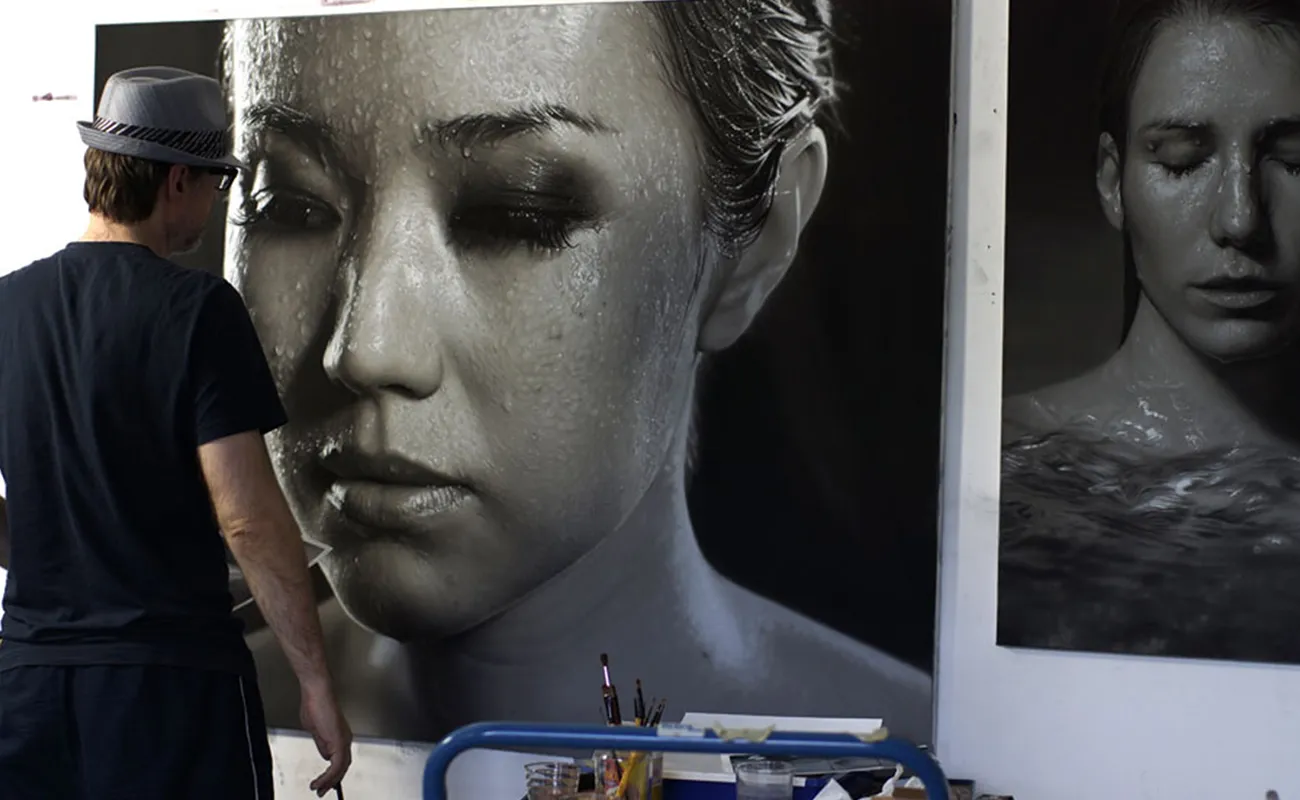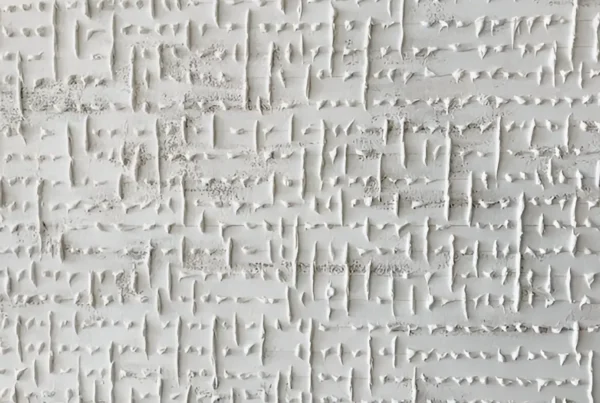The Beginnings: A Lifelong Fascination with Detail
Dirk Dzimirsky‘s journey into the art world began in Rhede, Germany, where he was born in 1969. Although his early life didn’t initially steer him towards a professional art career, his fascination with the intricate details of his surroundings was always evident. This early curiosity laid the groundwork for his future endeavors, shaping his unique approach to art that would eventually garner international acclaim.
Dzimirsky’s deep appreciation for the minute details in life translated naturally into his artistic pursuits. Initially, he explored various forms of expression, but it wasn’t until later in life that he fully committed to art. His passion for capturing the subtleties of the human experience propelled him into a journey that would redefine his career and significantly impact the art community.
The transition from a casual interest to a professional endeavor wasn’t instantaneous. Over time, Dzimirsky honed his skills, pushing the boundaries of his artistic capabilities. This relentless pursuit of perfection and his innate ability to see beyond the surface of his subjects have become the hallmarks of his work. His dedication to art has resulted in a body of work that not only captivates the eye but also evokes deep emotional responses.

Dirk Dzimirsky: The Path to Hyperrealism
Dzimirsky’s foray into hyperrealism began around a decade ago, driven initially by a desire to test the limits of his technical abilities. However, as he delved deeper into this style, he discovered its potential to explore the human condition in profound ways. Hyperrealism became more than just a technique; it was a medium through which he could express the complexities of vulnerability and sensitivity in his subjects.
Hyperrealism, for Dzimirsky, is not merely about replicating photographs with precision. Instead, it serves as a foundation for his creative process, allowing him to infuse each piece with layers of meaning and emotion. The meticulous detail he incorporates helps create an enigmatic atmosphere, transforming a simple image into a rich tapestry of human experience. This approach enables him to capture nuances that often elude even the most detailed photographs.
Each piece of Dzimirsky’s work is a journey from a photographic snapshot to a deeper representation of human exposure. Through his time-intensive process, he imbues his work with his interpretations and emotions, making every artwork a reflection of his inner world. This fusion of technical skill and emotional depth results in pieces that resonate on a personal level with viewers, offering a glimpse into the often hidden facets of human nature.

The Emotional Core: Vulnerability in Art
Dzimirsky’s art frequently explores themes of melancholic beauty and human vulnerability. He believes that beneath the facades people present to the world lies a deeper, often darker inner world. This hidden side, full of loneliness and fragility, is what he strives to uncover and communicate through his art. By revealing this aspect of his subjects, he creates a powerful connection between the artwork and its audience.
The subjects of Dzimirsky’s pieces are chosen with great care, often stemming from personal encounters or chance meetings. Whether he meets them through his work or spots them in public, he seeks individuals who embody the concepts he wishes to explore. In recent years, the advent of online platforms has expanded his pool of potential models, allowing him to find people who resonate with his artistic vision from all over the world.
The process from initial concept to finished artwork is both meticulous and intuitive. Dzimirsky begins with sketches and ideas, followed by photo shoots where he meticulously sets up lighting and mood to match his envisioned final piece. The creation of a drawing can take one to four weeks, while a painting may require up to six weeks, depending on its complexity. Throughout this process, he focuses on composition, light, and color balance, allowing the deeper meaning of the piece to emerge organically.

Dirk Dzimirsky: Art Beyond Boundaries
Dzimirsky’s works have been exhibited globally, and his collaborations on notable projects have brought his art to even broader audiences. One significant highlight was seeing his work displayed on billboards in Paris and Tokyo for the Waterman Pen Company. This experience was both gratifying and challenging, given the fleeting nature of public attention in today’s image-saturated world. Despite this, Dzimirsky cherishes the moments when viewers take the time to experience his art in galleries, where the full impact of his work can be felt.
In addition to his gallery exhibitions, Dzimirsky has also ventured into television and film. His artwork for A&E Network’s TV show “The Returned” stands out as a unique project where he was given complete artistic freedom. While he generally prefers to focus on his personal art, such opportunities allow him to expand his reach and collaborate with other creative industries. Currently, he works with individuals from the film and music sectors, primarily using them as models for his personal pieces rather than engaging in commercial production work.
Living and working in a former schoolhouse in Warmsen, Germany, provides Dzimirsky with a unique and inspiring environment. The serene and somewhat isolated setting allows him to immerse himself fully in his creative process. The historical significance of the old schoolhouse adds an additional layer of inspiration, making it an ideal space for his artistic endeavors. This tranquil backdrop enables him to focus deeply on his art, free from the distractions of the modern world.






